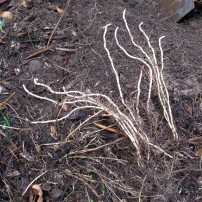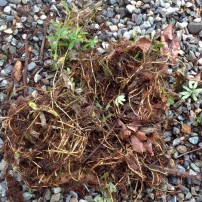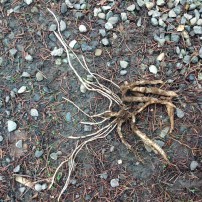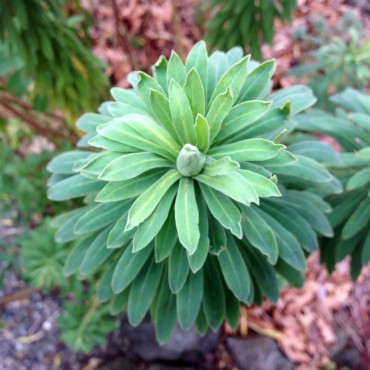
It is time to serve out some eviction notices. I’ve been cleaning out the garden, weeding, pruning and mulching as I go along, and making some tough decisions along the way: Who gets to stay, and who’s overstayed their welcome.
There was a time when any plant given to me or found as a bargain at a local plant sale was enthusiastically planted in my new, barren landscape.
Over the years, as my plant palate and knowledge have become a bit more refined and I’ve had plenty of opportunities to discover the thuggishness of some of these newcomers, I have much less patience with the bullies of the garden.
I would really like to reduce maintenance, and one way to achieve this is by eliminating aggressive, invasive growers.
I’d like to share some of the plants that have visited my garden only to be booted out, or ones I have confined to small areas where I can keep an eye on them. I hope this helps you be more selective and enjoy your landscape.
The following are treated like weeds because of their incredible ability to spread by seed, though I must admit I still secretly root for the ones that get by me and manage to flower:
- Foeniculum vulgare, bronze fennel
- Lychnis coronaria, rose campion
- Myosotis sylvatica, forget-me-not
- Impatients glandulifera, policeman’s helmet (I admit I got cold feet and never let this one flower)
- Eschsolzia californica, California poppy
- Origanum vulgare, oregano
These plants I love enough to allow, though only where I can keep a sharp eye on them:
- Meconopsis cambrica, Welsh poppy
- Alchemilla mollis, lady’s mantle
- Melissa officinalis, lemon balm
- Euphorbia characias subsp. wulfenii, Mediterranean spurge
- Euphorbia myrsinities, donkeytail spurge
- Digitalis purpurea, foxglove
- Stachys byzantina, lamb’s ears
- Geranium x oxonianum ‘Wargrave Pink,’ ‘Wargrave Pink’ cranesbill geranium
- Helleborus orientalis, lenten rose
- Aquilegia sp., columbine
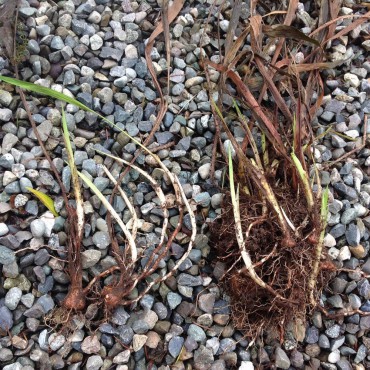
Shrubs:
- Buddleia davidii ‘Pink Delight,’ Pink Delight butterfly bush
Trees:
- Styrax japonicus, Japanese snowbell
- Acer palmatum, Japanese maple
These plants are aggressive spreaders and difficult to remove once happily established:
- Lysimachia mummularia ‘aurea,’ creeping Jenny
- Lysimachia clethroides, gooseneck loosestrife
- Lysimachia punctata, whorled loosestrife (there is a pattern emerging…)
- Epilobium canum (Zauschneria californica), California fuchsia
- Alstroemeria aurea, Peruvian lily
- Gallium odoratum, sweet woodruff
- Oxalis oregana, wood sorrel
- Crocosmia x crocosmiiflora, montbretia
- Aegopodium podograria, Bishop’s weed
- Lamiastrum galeobdolon, yellow archangel
- Houttuynia cordata, chamaleon plant
- Anemone hupehensis var. japonica, Japanese anemone
- Iris pseudocorus, yellow flag iris
- Helianthus x laetiflorus, prairie sunflower
- Hedera helix ‘Glacier,’ Glacier English ivy
- Euphorbia amygdaloides var robbiae, Robb’s spurge
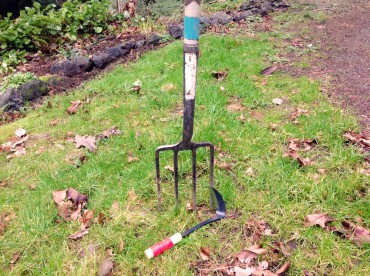
Trees that sucker:
- Rhus typhina, staghorn sumac
- Prunus sp., cherry and plum trees (do not sucker excessively)
Shrubs (these require annual control of unwanted suckering growth, but remain welcome):
- Cornus sanguinea ‘Midwinter Fire,’ Midwinter Fire dogwood
- Lonicera pileata, boxwood honeysuckle
- Symphoricarpos albus, snowberry
- Sarcococca spp., sweet-box
Many more thuggish plants are available to us, but I have limited this list to the ones I’ve had in my own garden.
I am not completely immune to the charms of many of my exuberant plant companions, and I am willing to put up with some rough elbowing in the beds, but to the real thugs I say, “Hasta la vista, baby!”




